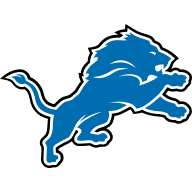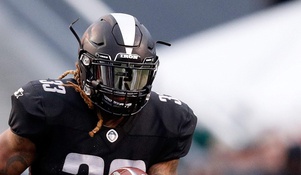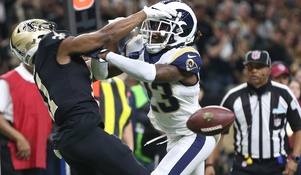5 Point Stance: Most Controversial Rule Changes
The NFL, like many sports leagues, makes annual rules and procedure changes. They are often designed for a multitude of reasons, from player safety to television programming convenience. However, there are some instances that amending the rules of the game caused more trouble than what was originally in place. Here are a list of five rules changes that caused the most consternation amongst fans, media types, players, and coaches alike.
1. The defender's "body weight" rule in regard to roughing the passer. Since the 1980's, the league has made many alterations to the rulebook to protect quarterbacks. Depending on who one asks, the reasons are several; from protecting the face of the franchise to safety, as passers are left in positions of complete vulnerability the moment after delivering a throw. Most of those rules have prevented many unnecessary injuries to signal callers. But in 2018, it is possible that the powers that be in league circles have went too far. This rule was developed, in theory, after Green Bay QB Aaron Rodgers suffered a broken collarbone after throwing a pass and Minnesota linebacker Anthony Barr landed square on Rodgers in 2017, costing the perennial NFL MVP candidate his season. In response, the NFL wanted to crack down on such action, making it a personal foul of roughing the passer if a defender "violently and unnecessarily" lands "all or most of his body weight" onto a quarterback. The concept was to deter extracurricular physicality on quarterbacks. However, players are being flagged for fouls for making contact in the organic motion of the game. What was a sack in 2017 can trigger a drive extending penalty in 2018. By a few accounts, this was not the intent of the league's competition committee when they crafted this rule this past offseason. But a remedy may not arrive until 2019 if one is to take the league at its word. This, regrettably, will be a story that will serve as a backdrop for the balance of 2018.
2. The dizzying difficulty to ascertain the definition of a catch from 2010 to 2017. Those who have great umbrage with the new roughing the passer parameters must not feel heartened about a swift turnaround given it took nearly a decade for the NFL to clearly define a catch. The catch controversy reared its head in Week 1 of 2010, when Detroit Lions wide receiver Calvin Johnson was not credited a touchdown for what appeared to be a reception. The rule at the time defined a catch differently between the goal lines and the end zone. In the end zone, a receiver had to "complete the process" (a phrase that has triggered many Maalox moments for fans and teams just the same) to be credited for a score. In that time, the issue of the pass catcher establishing and maintaining control became a crux of the issue. After many returns to the drawing board, the league may have solved the problem by simplifying the definition; as long as the player has control of the ball, it's a catch. Only time will tell if this version will hold muster.
3. Modifications to the rules of overtime. For over 40 years, the NFL had a simple philosophy when it came to overtime: sudden death rules, which meant first team to score wins. Overtime periods would be the same time length as those in regulation, 15 minutes, with regular season games ending a tie if neither team scores in a single OT frame, while playoff games would be played until a winner emerged. In 2010, the league made a change to the rules of sudden death. If the team winning the kickoff scores a field goal on their first possession, the opposing team would be given an opportunity to respond. This was done as an ostensible response to the New Orleans Saints winning the NFC Championship in OT by a field goal with their first (and only) possession. This was a moronic rule change. The amount of overtime games played in which the team who first possessed the ball and made a game winning field goal on said possession was roughly 25 percent. That means 3 out of 4 times, both teams played offense at least once. This change seemed more reactionary in the moment as opposed to a well thought out concept. Compounding that in 2017, the NFL decided to shorten overtime periods to ten minutes. This was baffling. These moves have been the major contributing factors in the NFL's uptick in tie games, which no fan, diehard, casual, and everyone in between, wants to watch. A game without a clear victor feels like a waste of time to American fans, be it in the stadium or watching at home. One could only hope that an epiphany strikes those in charge and rolls back these aberrations.
4. The point after touchdown being pushed back 13 yards. The overall impact on this change has been a point of discussion for those interested in analytics. Does one attempt a two point conversion at the two yard line with one's offense or attempt a single point from 33 yards out? However, for those fans who watch the game for its entertainment value, it was an issue when the lengthened PAT's were first attempted. The reason being is the radical alteration to the look of the play. When one notices such a stark difference, it leads to one questioning if they're watching the same game they have for many years. Once it remained in place, it simply became a part of the game again. But for a league whose desire is to draw in as many viewers as they can, changes like this can cause a bout of culture shock to such an audience.
5. The long running adventures of instant replay. Instant replay finds itself in the middle of a plethora of controversies simply because it is an officiating tool that, depending on its use, can make or break games and seasons for those teams that get involved. But for this exercise, this is an examination of the usage of replay itself. When it was first introduced in 1986, there was a fear that the new technology would ultimately be used in lieu of human officials on the field (and in a few instances in 2017, that was the case). There were inaccuracies in some occurrences, but the biggest complaints during its first run was it was too time consuming (adding overall time to a game and broadcast) and issues with its overall effectiveness. Those problems became so troublesome that the NFL junked replay in 1991. It was brought back in 1999, with a more streamlined guide as to what can be reviewed and the introduction of coach's challenges to plays, which meant that twice a game a coach can ask for a play to be reviewed, losing a time out if it is unsuccessful. If a coach wins both challenges, he would be awarded a third. Later on, to reduce the number of coach's challenges still, reviews would be automatic on scoring plays and turnovers. Replay's most recent controversy has been its usage under vice president of officiating Al Riveron, who was overriding on field officials in 2017 on certain calls, with a number of them done erroneously. Riveron has eased his approach to let the guys in stripes be the primary voice of authority on the field of play. Overall, the NFL's replay system works well, even if there are some imperfections. But it took many years to go from a wary new technology to accepted arbiter of unclear judgement.







